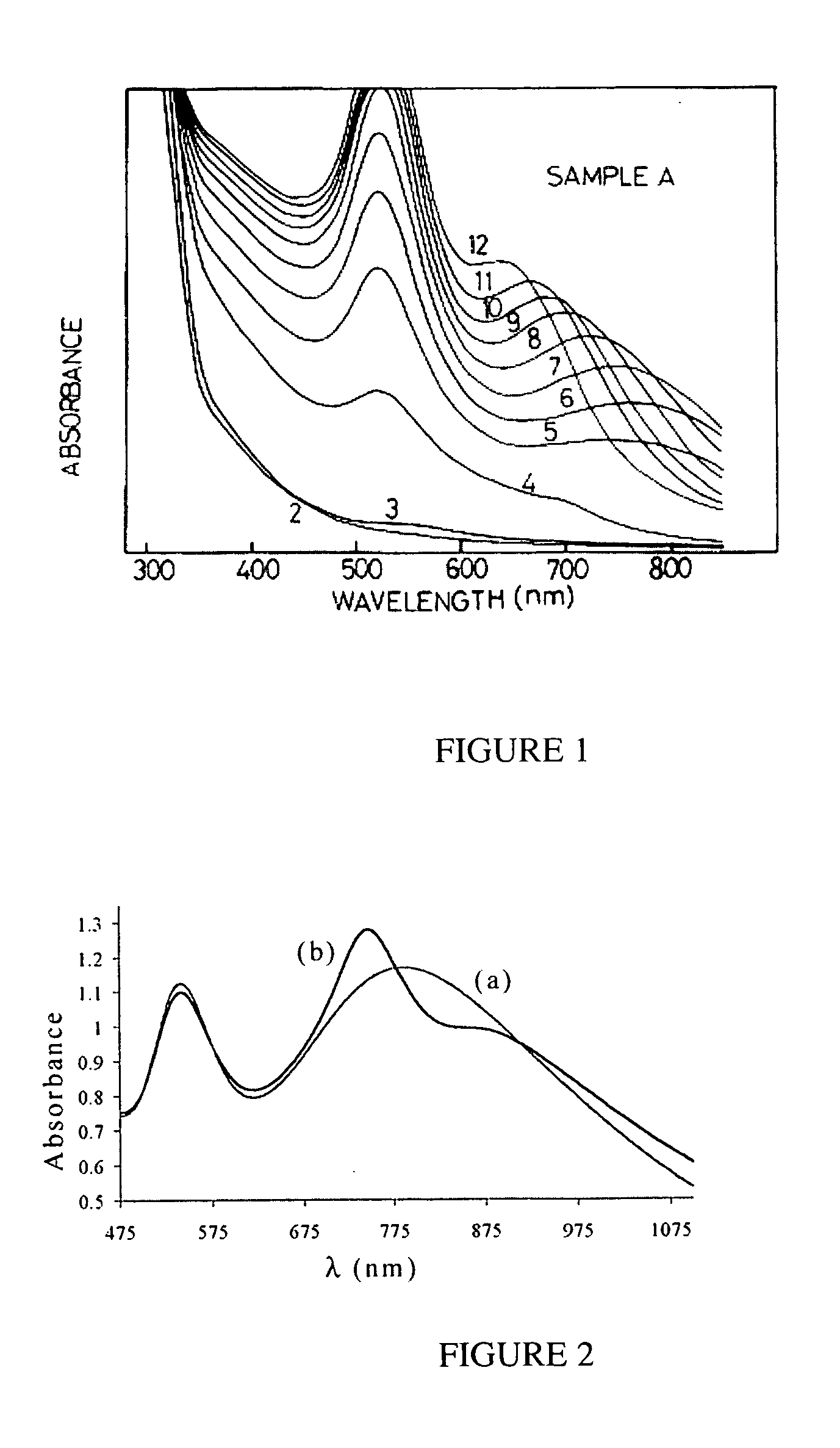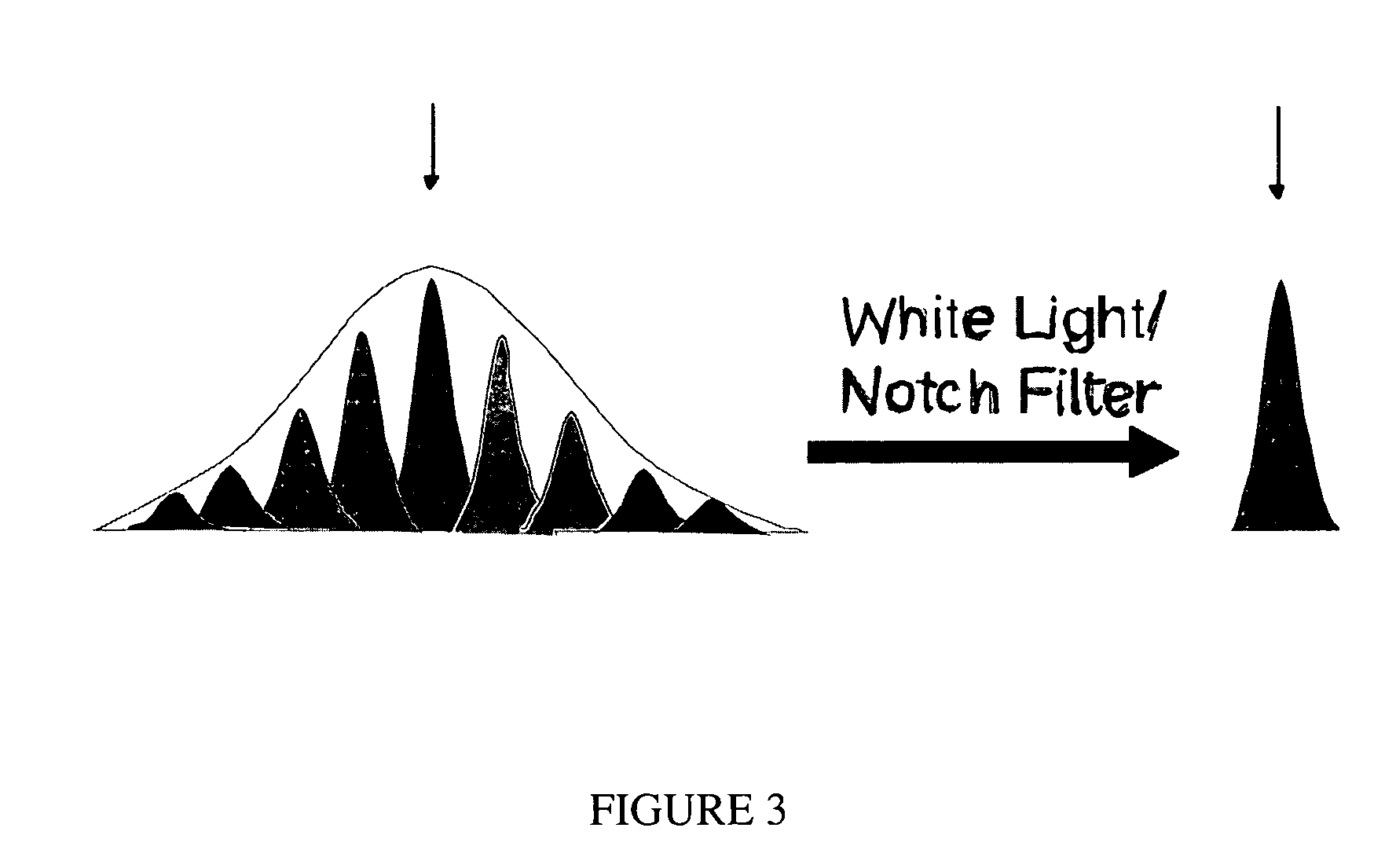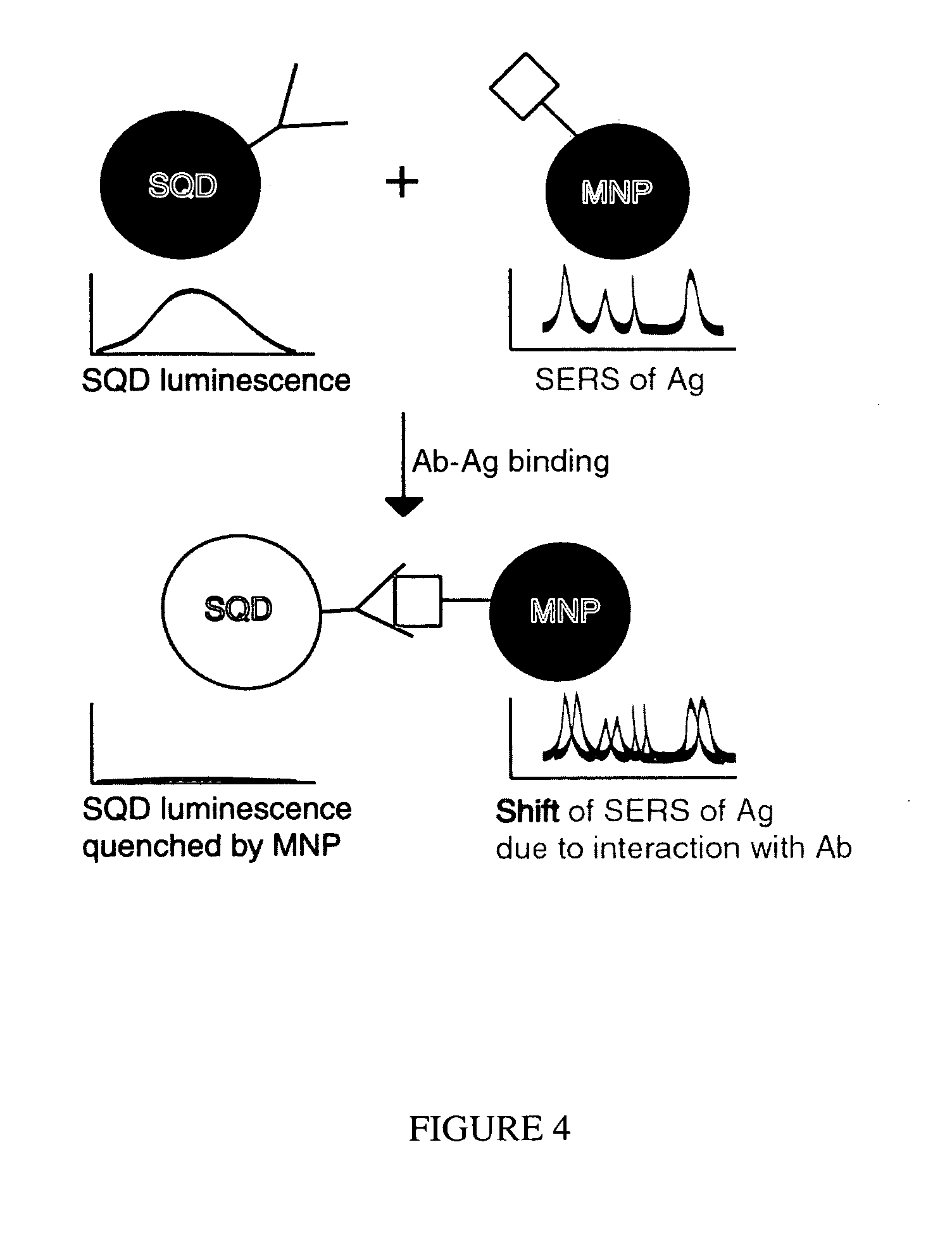Novel gold nanoparticle aggregates and their applications
a technology of nanoparticles and aggregates, applied in the field of new gold nanoparticle aggregates and their applications, can solve the problems that no one perceived that raman fibers could be pumped, and achieve the effect of convenient use and low manufacturing cos
- Summary
- Abstract
- Description
- Claims
- Application Information
AI Technical Summary
Benefits of technology
Problems solved by technology
Method used
Image
Examples
examples
[0126]The invention will be more readily understood by reference to the following examples, which are included merely for purposes of illustration of certain aspects and embodiments of the present invention and not as limitations.
example i
Synthesis of Gold Nanoparticle Aggregates
[0127]The synthesis of the gold nanoparticle aggregates (GNAs) was performed as follows: 400-600 ul of a 0.02 M HAuCl4 stock solution was diluted to 4×10−4-6×10−4 M with Milli-Q water in glassware cleaned in aquaregia and rinsed with Milli-Q water to avoid contamination. To this, 40-60 μl of a 0.1 M solution of Na2S that has been aged for 2-3 months was added. After approximately 60-120 minutes, the color changed from a straw yellow to deep purple with the extended plasmon band (EPB) growing in between 600-1000 nm, indicating reaction completion. The aggregate formation was signified by strong near-infra-red (NIR) absorption at wavelengths longer than 600 nm. This reaction is also performed with sodium thiosulfate (Na2S2O3) by replacing 1:1 the sodium sulfide solution, however, while these particles are optically identical to those that are sodium sulfide generated, they work poorly for SERS and should only be used for non detection applicati...
example ii
Coating Gold Nanoparticle Aggregates onto Substrates / Fiber
[0128]The coating of gold nanoparticle aggregates onto a substrate / fiber was performed in two ways. First, by spin coating or drop casting a dilute solution of the aggregates onto the substrate. This yields a relatively thick film, however, it is not as stable as is necessary for many applications. The second method utilizes a tethering molecule, in this case trimethoxy[3-(methylamino)propyl]silane (APS). The substrate was cleaned prior to the silanization step by sonication in 2% solution of HELLMANEX or other surfactant, followed by 18 mΩ water.
[0129]The gold nanoparticle aggregates were then submerged in a 5 mM aqueous solution of APS to deposit the tethering molecules. After 1-2 minutes the substrate was rinsed with water, dried under nitrogen, and 40 μl of the aggregate solution was placed on the surface. After several seconds exposed to the solution, it was blown dry with nitrogen. This provided a significantly thinner ...
PUM
| Property | Measurement | Unit |
|---|---|---|
| spectral wavelength | aaaaa | aaaaa |
| spectral wavelength | aaaaa | aaaaa |
| spectral wavelength | aaaaa | aaaaa |
Abstract
Description
Claims
Application Information
 Login to View More
Login to View More - R&D
- Intellectual Property
- Life Sciences
- Materials
- Tech Scout
- Unparalleled Data Quality
- Higher Quality Content
- 60% Fewer Hallucinations
Browse by: Latest US Patents, China's latest patents, Technical Efficacy Thesaurus, Application Domain, Technology Topic, Popular Technical Reports.
© 2025 PatSnap. All rights reserved.Legal|Privacy policy|Modern Slavery Act Transparency Statement|Sitemap|About US| Contact US: help@patsnap.com



